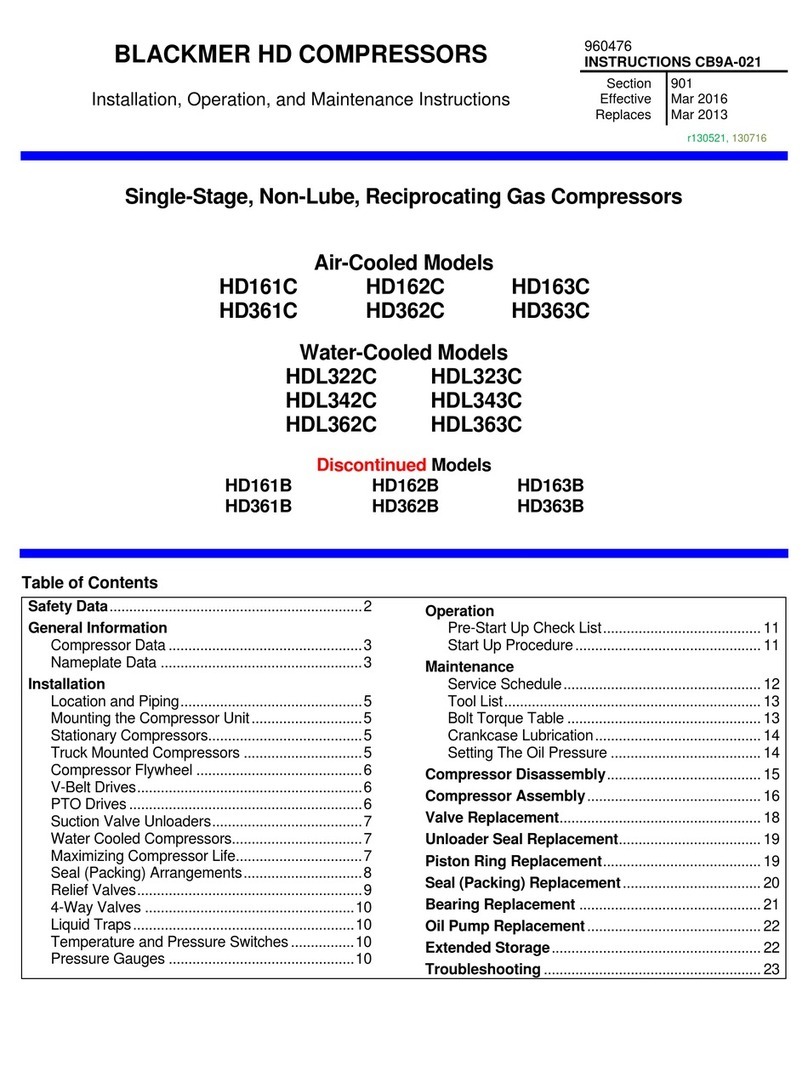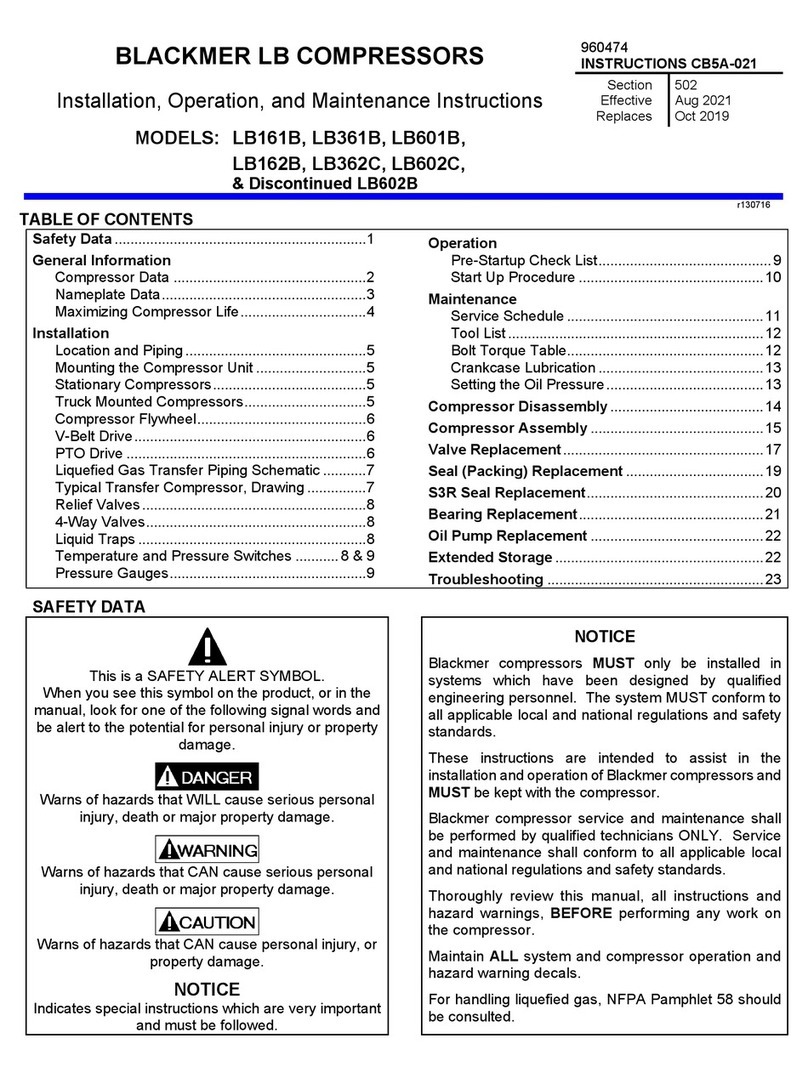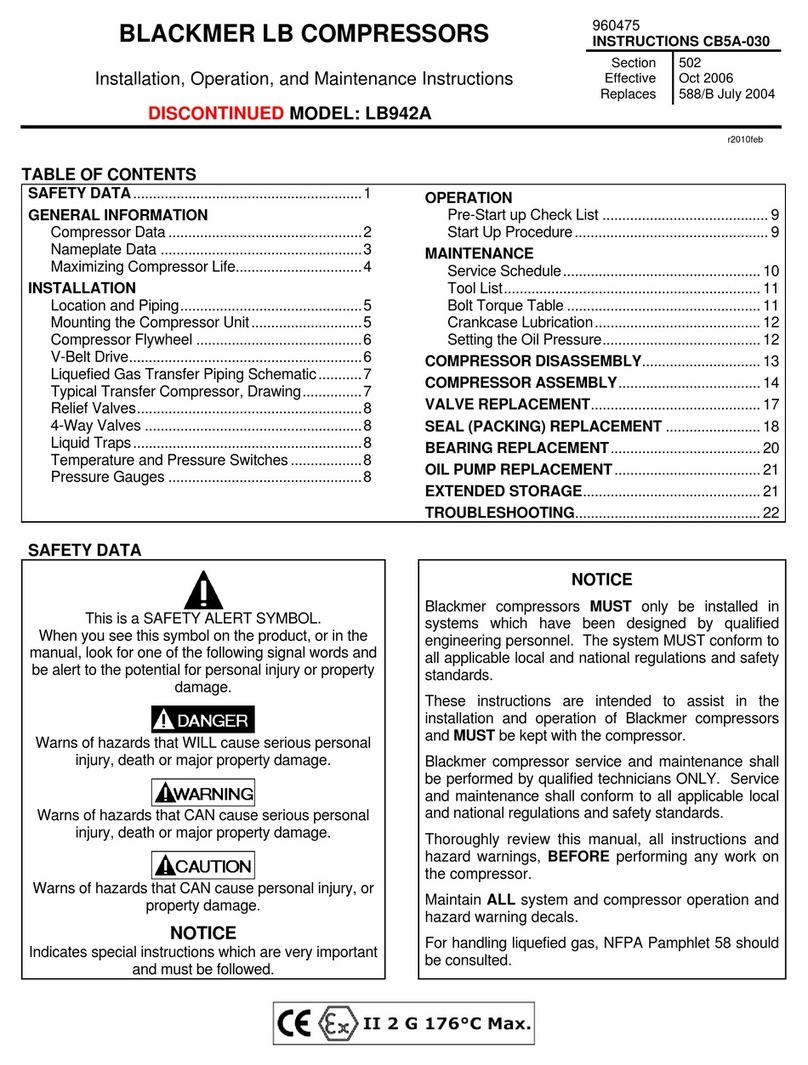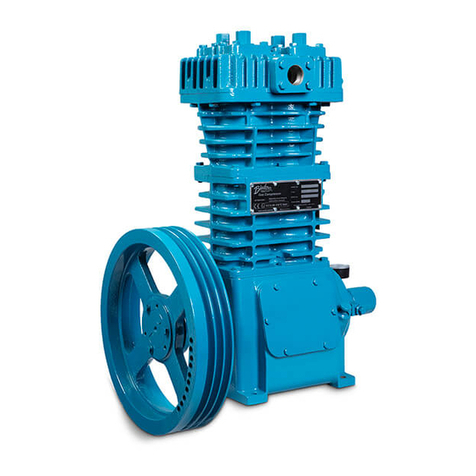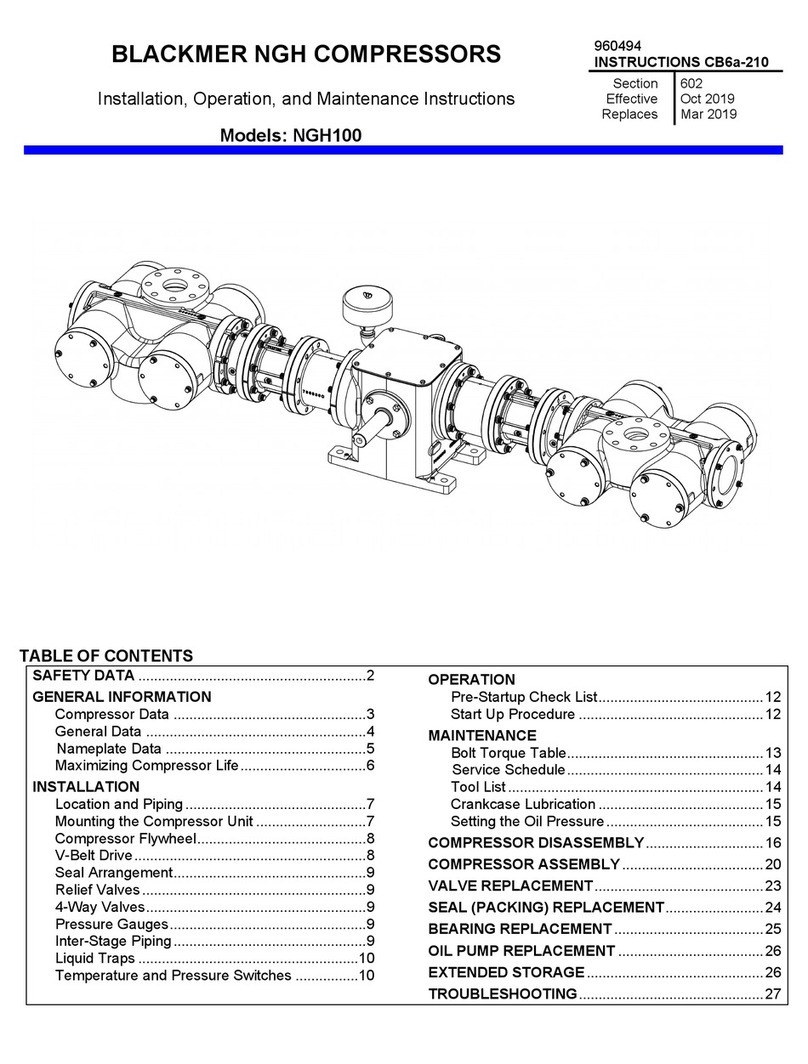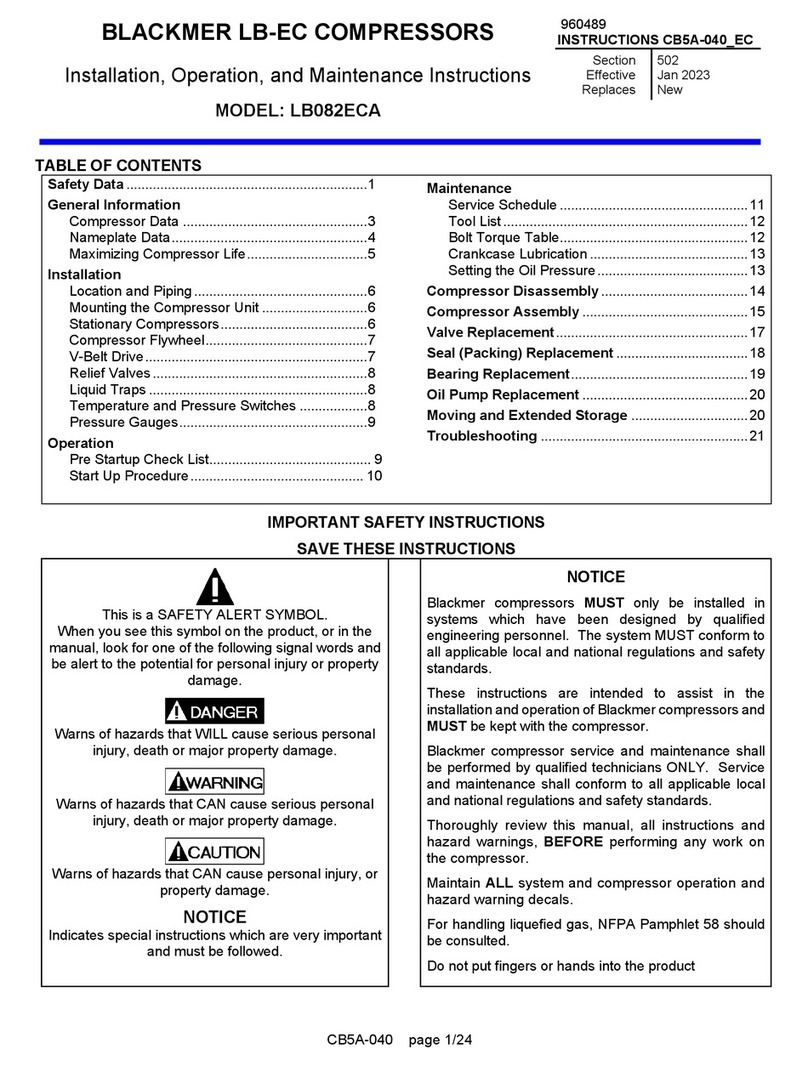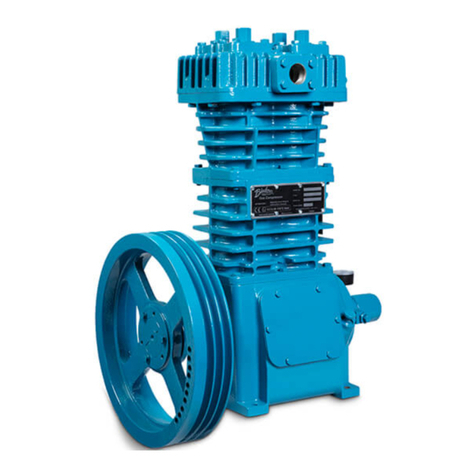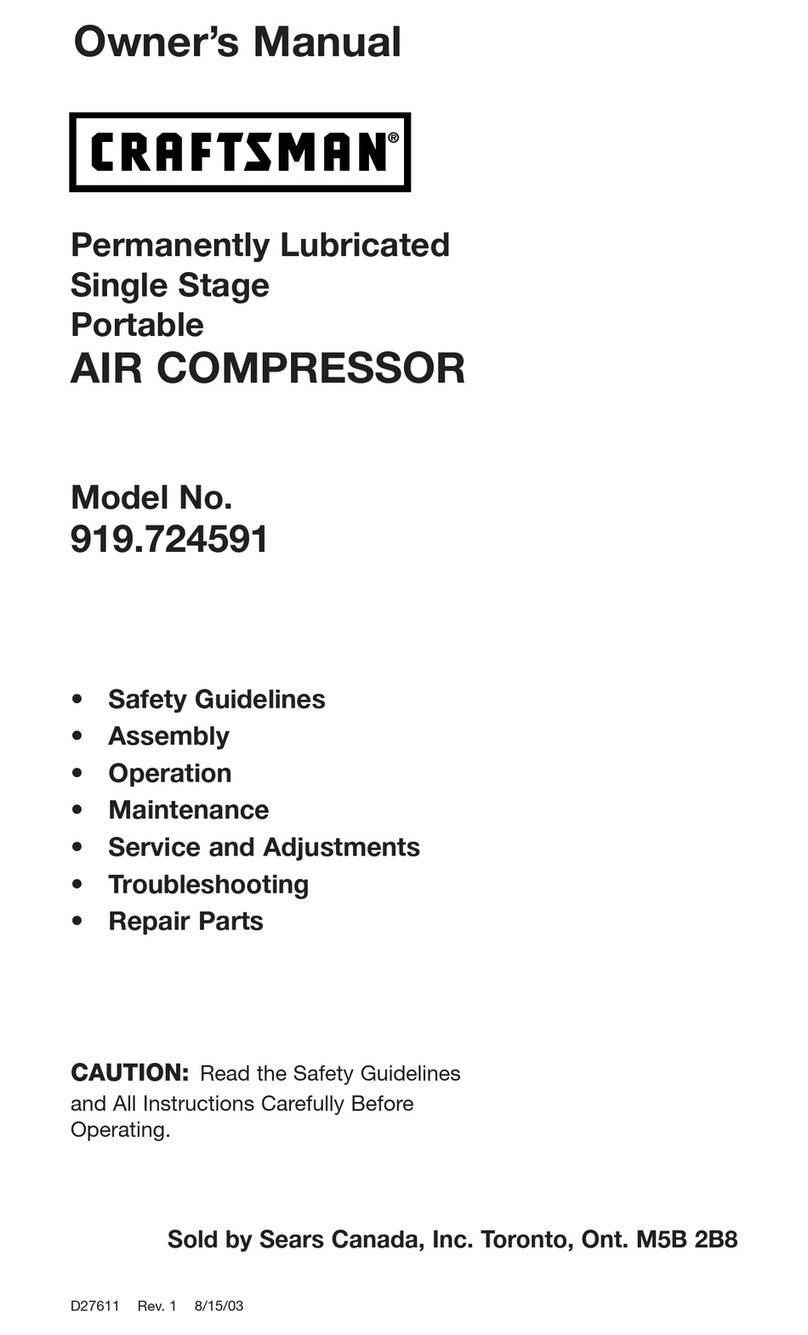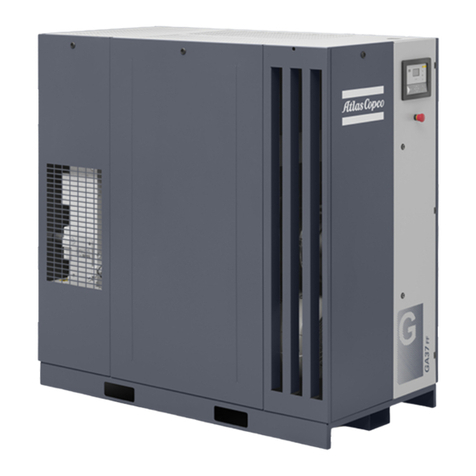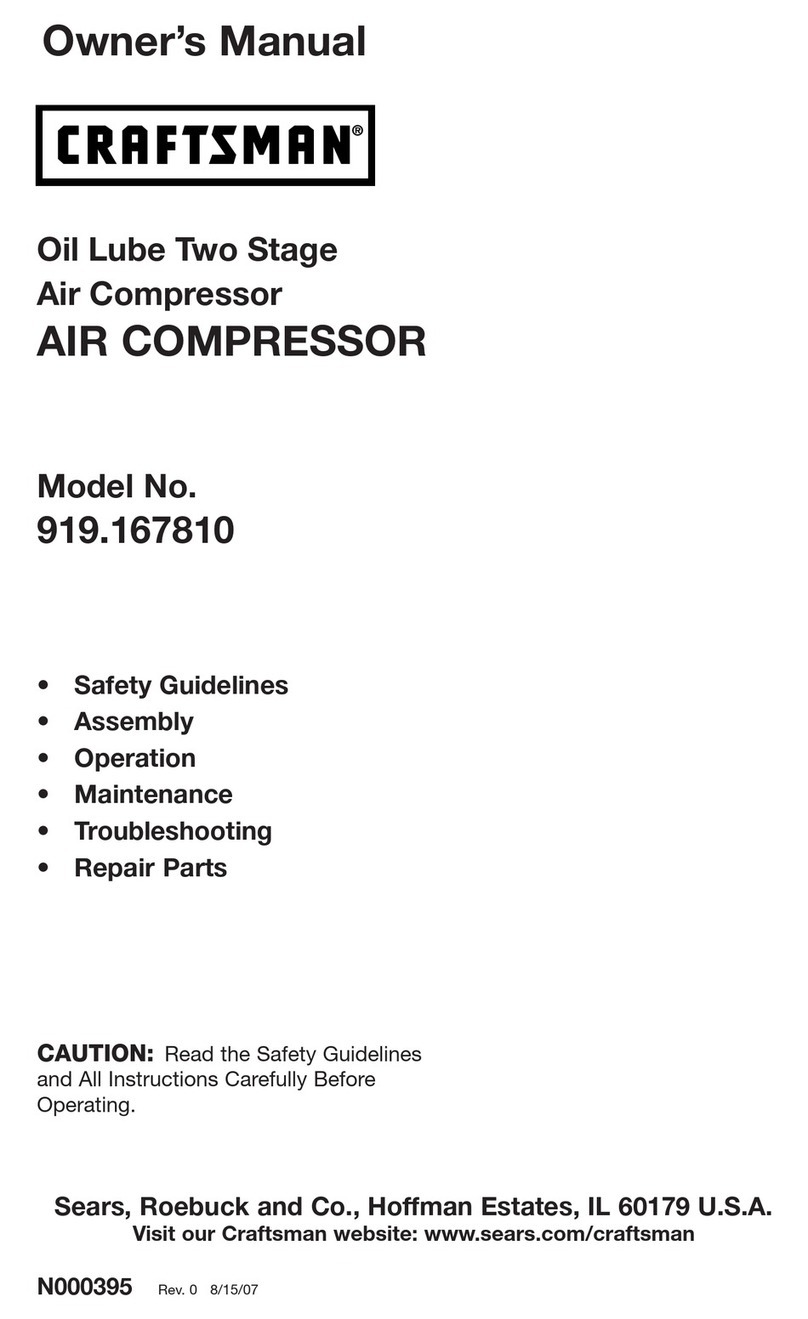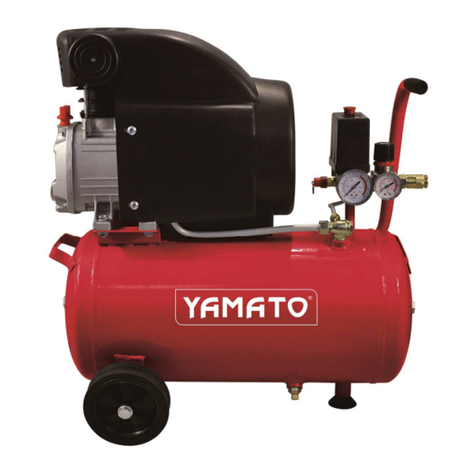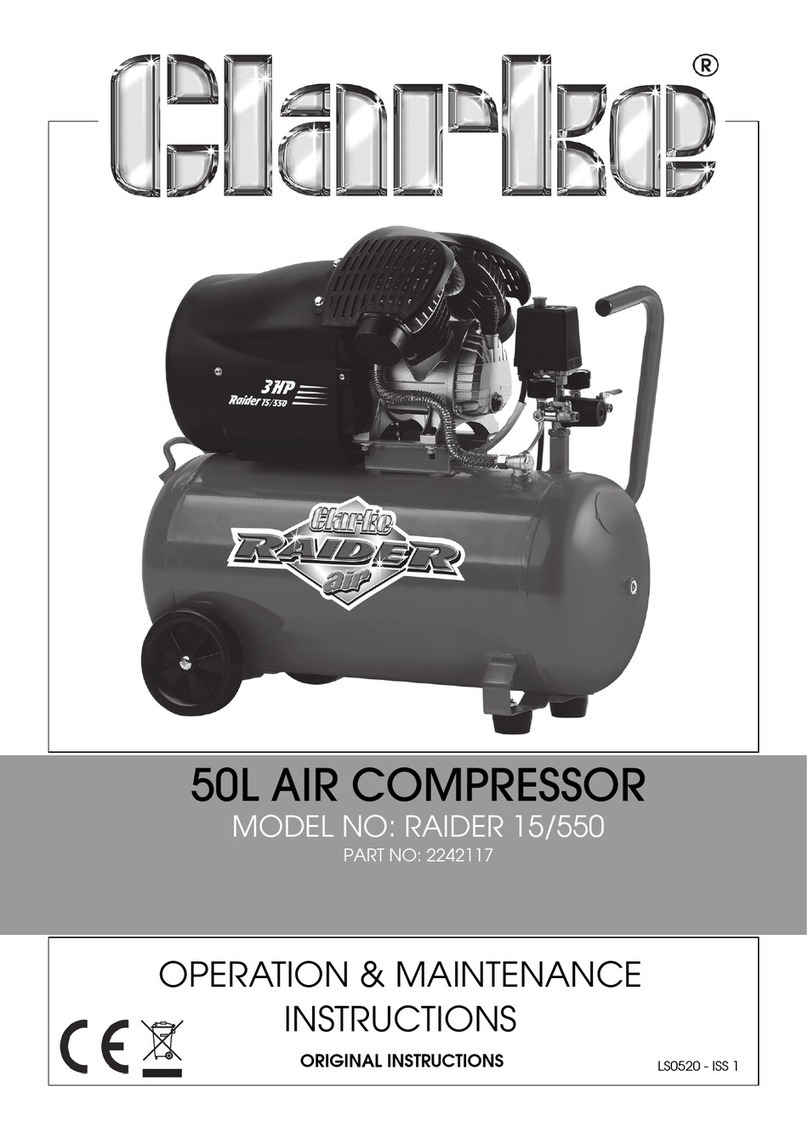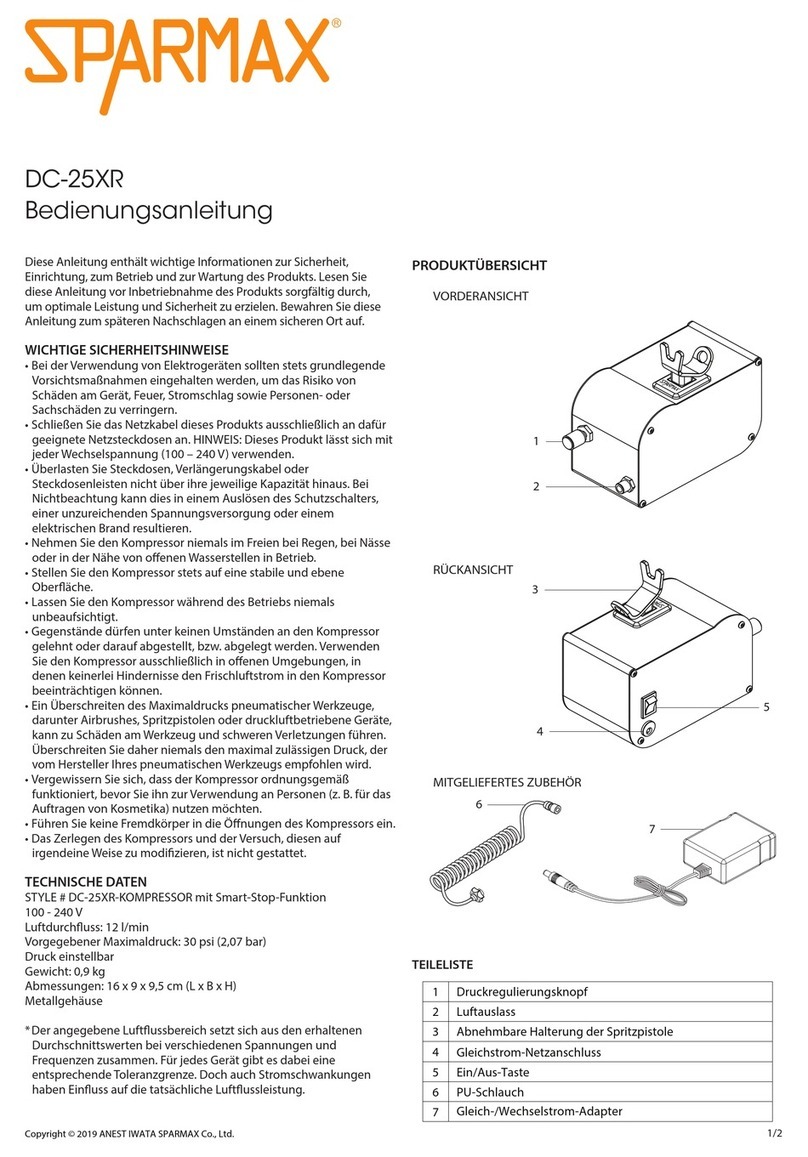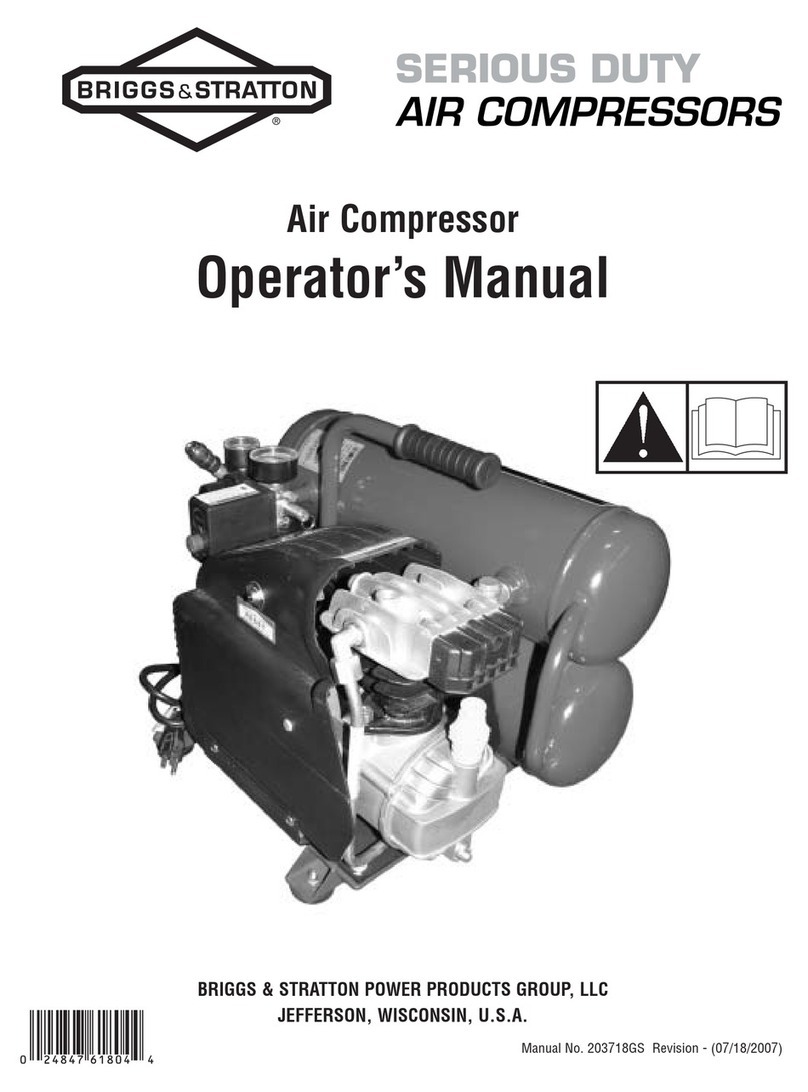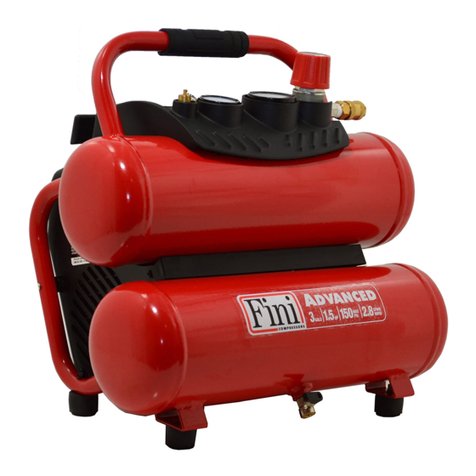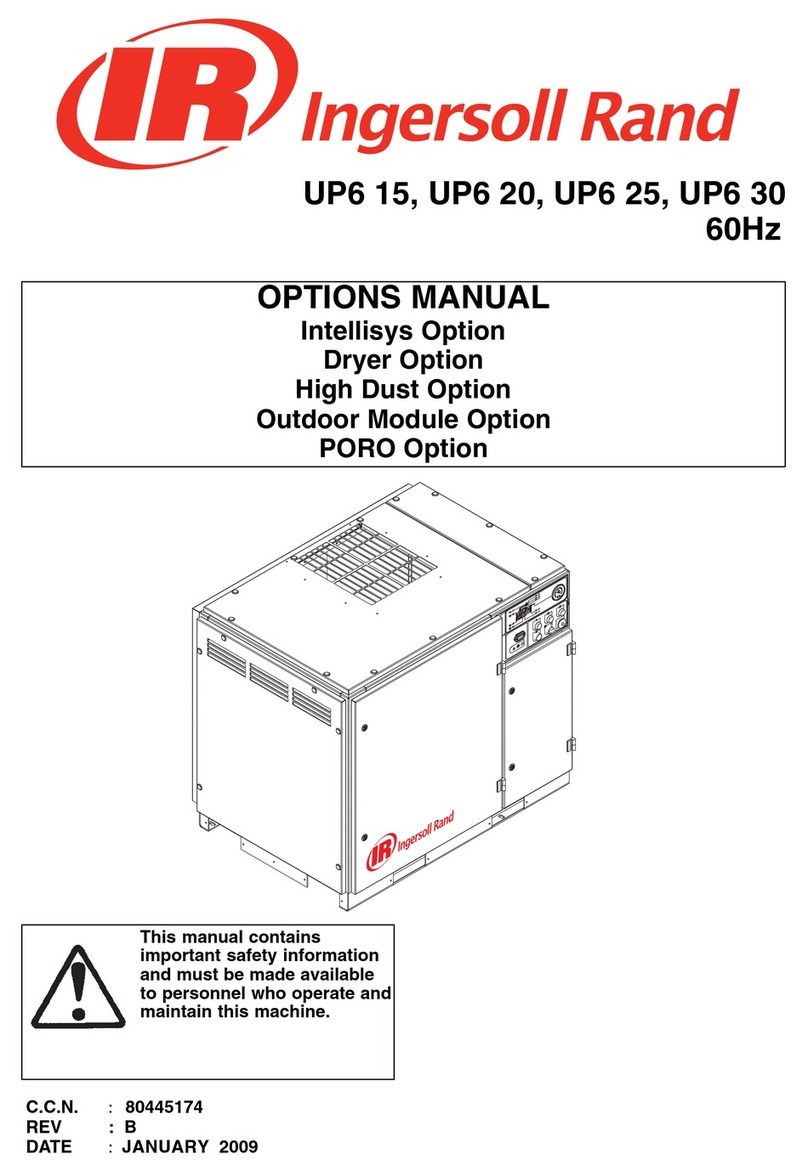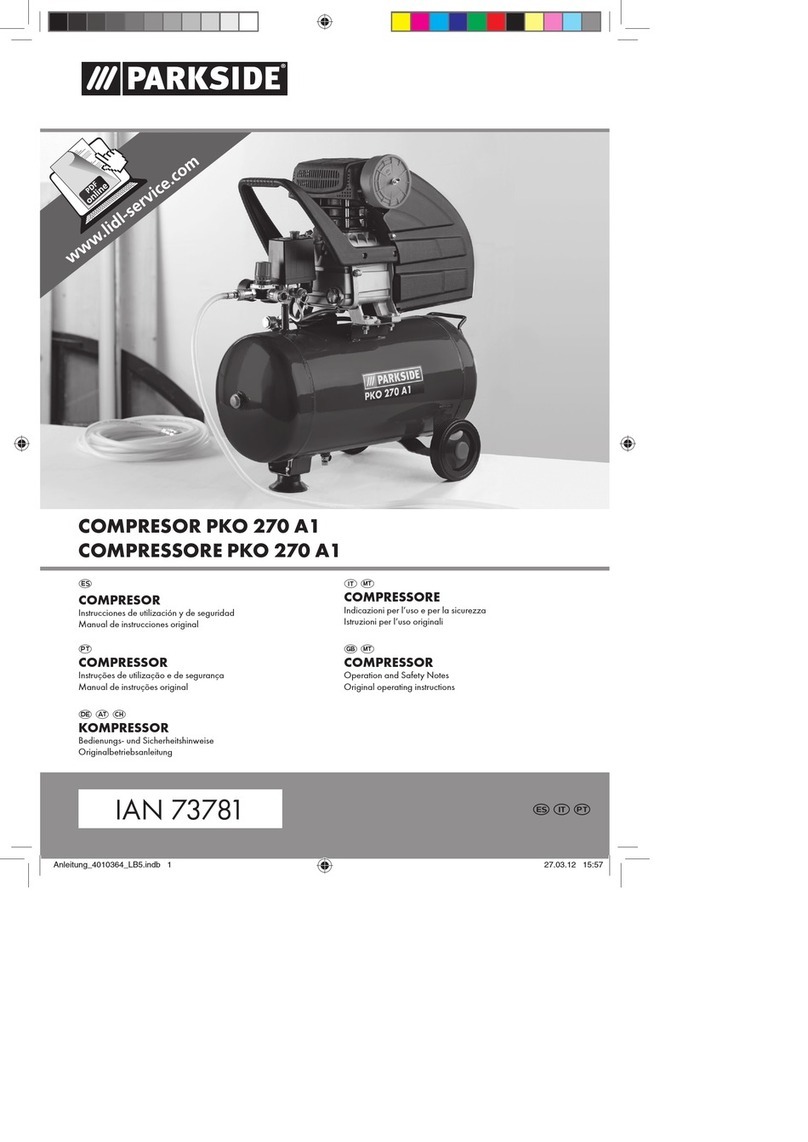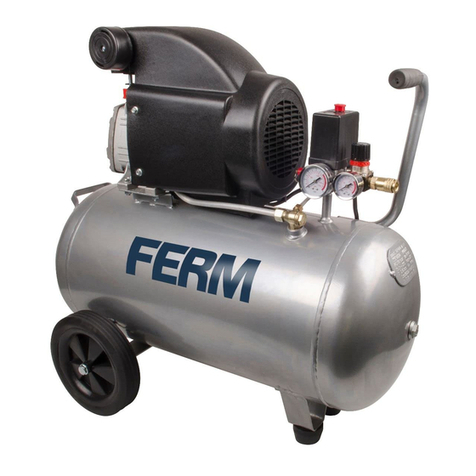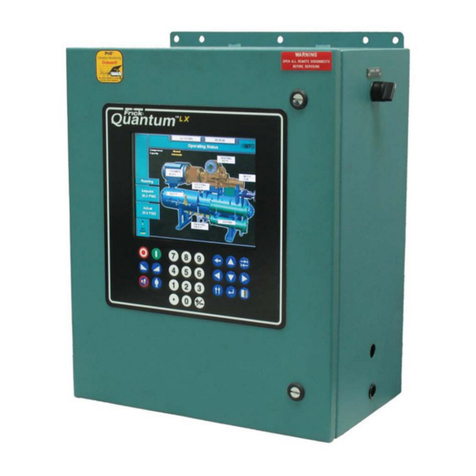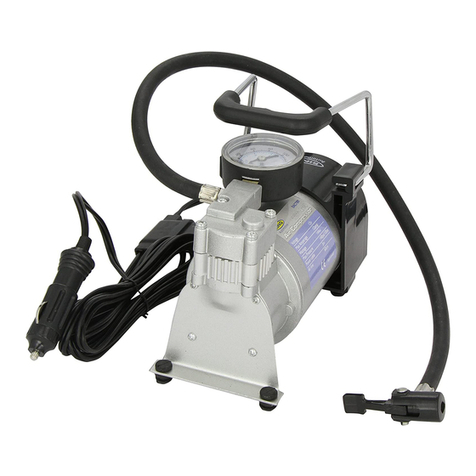
INSTALLATION
CB9A-005 page 8/28
MAXIMIZING COMPRESSOR LIFE
Life of critical compressor components such as piston
rings, valves and packing will vary considerably with
each application, installation, and operating procedures.
Premature failure of wear parts can often be attributed to
one of the following causes:
Excessive Temperatures
Primary causes are:
Operating at pressures other than those originally
specified.
Handling a different gas than originally specified.
Clogged strainer or filter elements.
Line sizes too small, or other flow restrictions.
Excessive ambient temperature or suction gas
temperature.
Valve problems. (See Foreign Material.)
Badly worn piston rings. (See Foreign Material.)
Lower operating temperatures will increase valve and
piston ring life significantly.
Extreme temperatures caused by
abnormally high discharge pressure or
valve problems can be a source of
ignition in explosive atmospheres
causing severe personal injury or death.
Hazardous gases
can cause property
damage, personal
Foreign Material
Solid particles in the gas stream will:
Rapidly wear the piston rings and score the cylinder
wall.
Destroy the rod packing causing excessive leakage
and score the piston rods.
Lodge in the valves causing loss of capacity and
broken valve plates and springs.
Liquid in the gas stream will:
Cause broken valve plates and springs.
Destroy the compressor if present in sufficient
quantity.
On new installations, it is suggested that the valves
and piston rings be inspected after the first few hundred
hours of operation. This will give an early indication of
any abnormal problems and allow for corrective action to
be taken before a costly failure results. Although piston
ring life will vary from application to application, wear will
be fairly consistent on subsequent sets of rings.
RELIEF VALVES
A relief valve of a type, material and pressure rating
suitable to the installation, MUST be installed. The relief
valve shall be installed in the discharge line between the
compressor head and the first block valve.
Compressor operating against closed
valve can cause system component
failure, personal injury or property
damage.
Hazardous pressure
can cause serious
personal injury or
property damage
Since all systems differ in design, care must be taken to
ensure the relief valve is installed to safely vent away
from sources of ignition and personnel. This can be
accomplished by either orientation or a pipe away;
consult the Relief Valve manufacture for assistance.
Operation of the relief valve can release
explosive gas to the atmosphere
creating an explosion hazard, possibly
causing personal injury or death
Hazardous gases
can cause property
damage, personal
Should the Relief Valve actuate, the cause MUST be
determined and corrected before continuing operations.
See the 'Troubleshooting' section.
Blackmer offers various relief valves for gas and
application compatibility.
LIQUID TRAPS
Compressors handling gasses containing condensates
or other liquids MUST be protected from entry of the
liquid. Liquid can also enter the compressor from the
discharge piping, particularly if the piping slopes down
toward the compressor. To prevent liquid from entering
the compressor and causing major damage, it is
necessary to carefully consider the system design and
have strict procedures for operation.
NOTICE: Liquid in the compressor cylinder can
cause destruction of the compressor.
Blackmer offers a variety of liquid traps. The most
common variations include:
1. A non-code vessel fitted with a stainless steel float
which will shut off the intake line to the compressor
in the event of an excessive liquid level. A vacuum
breaking valve is provided on the liquid trap head in
case the trap closes and a vacuum develops
between the compressor and the trap. A manual
drain valve is provided.

